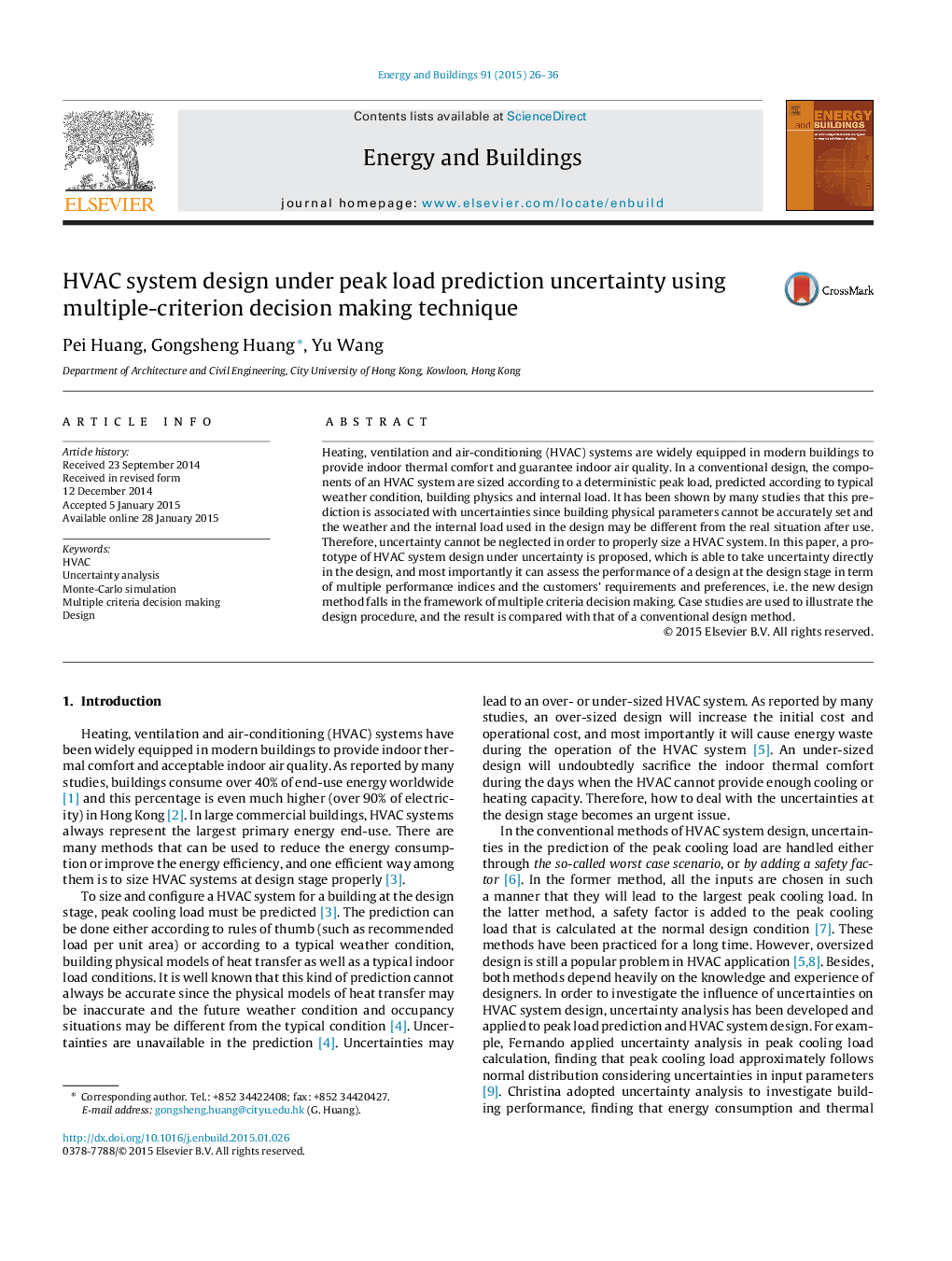| Article ID | Journal | Published Year | Pages | File Type |
|---|---|---|---|---|
| 6732198 | Energy and Buildings | 2015 | 11 Pages |
Abstract
Heating, ventilation and air-conditioning (HVAC) systems are widely equipped in modern buildings to provide indoor thermal comfort and guarantee indoor air quality. In a conventional design, the components of an HVAC system are sized according to a deterministic peak load, predicted according to typical weather condition, building physics and internal load. It has been shown by many studies that this prediction is associated with uncertainties since building physical parameters cannot be accurately set and the weather and the internal load used in the design may be different from the real situation after use. Therefore, uncertainty cannot be neglected in order to properly size a HVAC system. In this paper, a prototype of HVAC system design under uncertainty is proposed, which is able to take uncertainty directly in the design, and most importantly it can assess the performance of a design at the design stage in term of multiple performance indices and the customers' requirements and preferences, i.e. the new design method falls in the framework of multiple criteria decision making. Case studies are used to illustrate the design procedure, and the result is compared with that of a conventional design method.
Related Topics
Physical Sciences and Engineering
Energy
Renewable Energy, Sustainability and the Environment
Authors
Pei Huang, Gongsheng Huang, Yu Wang,
